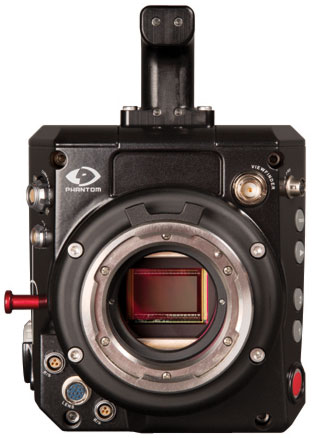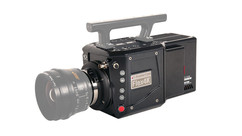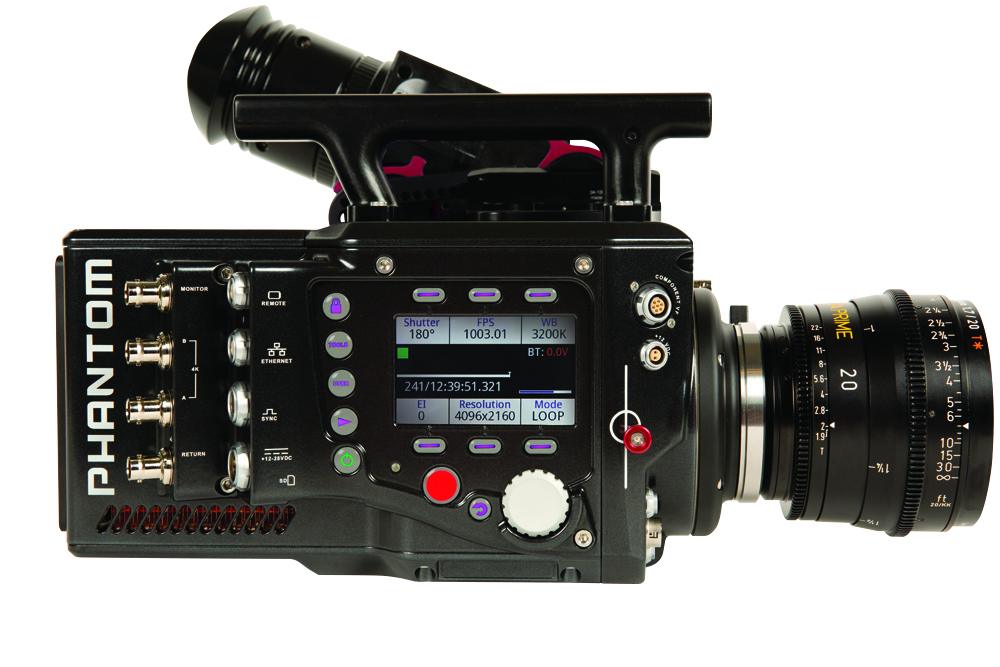
Resources
Resolution & Frame Rates
Flex4K offers a wide range of resolutions and frame rates to suit a variety of production styles. Below are the cameras maximum frame rates at some common formats.
| Format | Resolution | FPS to RAM |
| Full Sensor | 4096x2304 | 940 fps |
| DCI 4K (1.89) | 4096x2160 | 1000 fps |
| Quad HD | 3840x2160 | 1000 fps |
| DCI 4K (2.35 crop) | 4096x1744 | 1240 fps |
| HD | 1920x1080 | 2000 fps |
Camera Design
An all-new industrial design reflects some significant improvements for the Phantom line. A large, convenient handle has been added to the top of the camera because the CineMag port has been moved to the operator side. A flip-out door and rail slot ensure a more positive, safe, and reliable connection. The new CineMag IV is physically smaller than the earlier version yet larger in capacity (up to 2TB).
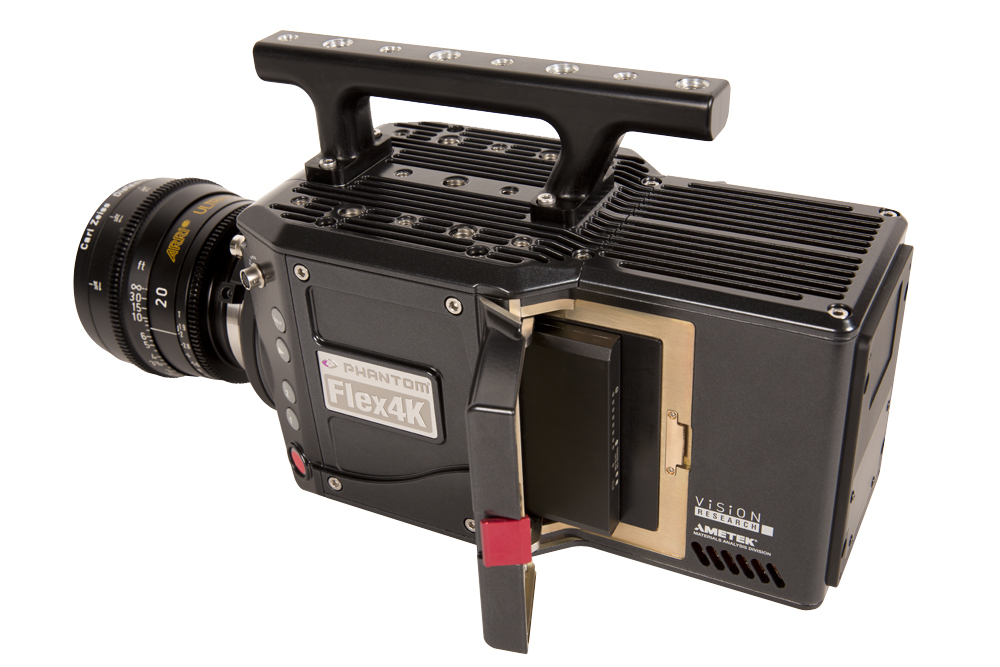
Another physical change is the relocation of all connections from the back of the camera to the rear section of the right side. This makes way for a battery port on the back to hold industry-standard batteries for handheld and portable operation.
Sensitivity and dynamic range are important benchmarks in digital cinema. Early testers have said the Flex4K has the least amount of noise of any digital cinema camera in existence. The lack of noise in the blacks means the camera can be rated for a range of shooting conditions and corresponding exposure values, from 250 ISO to 2000 ISO. This ability contributes to the camera being considered both a high-speed camera, as Phantom is known for, as well as a standard frame rate camera.
RAW and Uncompressed
There have always been two ways to record Phantom, as either a RAW "Cine" file on a CineMag or as video through the HD-SDI outputs onto an external recorder. Now there is another recording path: an industry-standard codec recorded onto the CineMag. In this configuration, the compression happens in-camera and has the advantages of longer record time and smaller files for a simplified workflow. For maximum flexibility in post processing, the RAW recording option is still a choice.
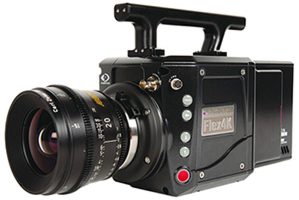 Control
Control
Phantom operational control has been significantly improved in the Flex4K. On the operator side, there are buttons for capture, trigger, playback and save. On the right side, a user interface screen provides full-featured on-camera controls for the first time in a Phantom camera. Basic and advanced parameters are both available from the user interface. It's easy to set up general conditions for the shoot like resolution and playback speed, as well as have quick access to other parameters like frame rate and shutter angle. The interface is very intuitive and conforms to the way digital cinema cameras are currently expected to operate.
Remote control takes on another dimension with the PCU2 from AbelCine, which for the first time will have a wireless option.
Viewfinder
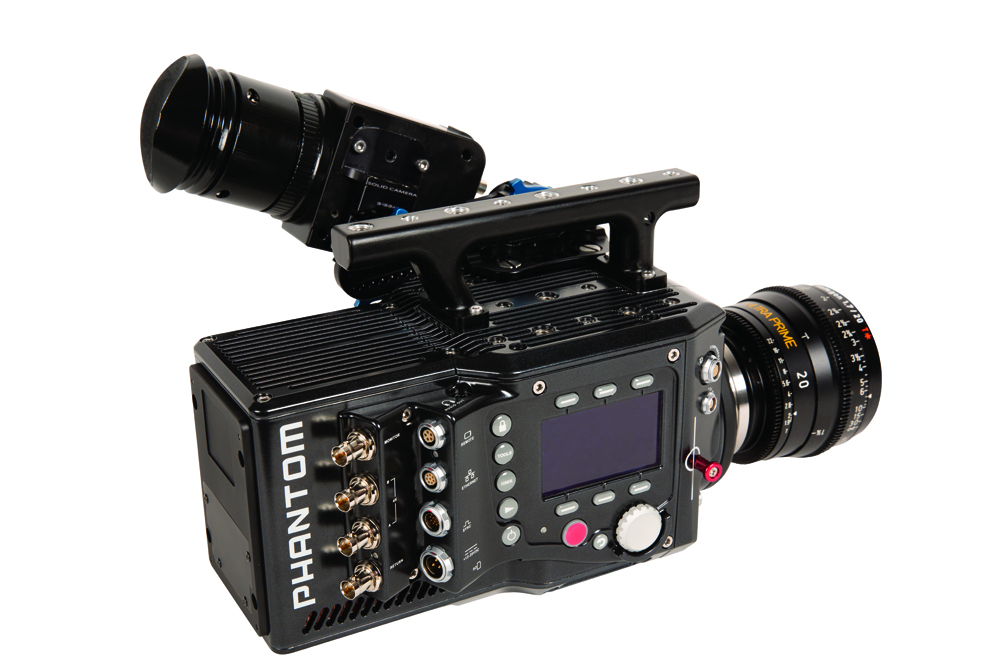 The Flex4K demonstrates further flexibility with a choice of viewfinders. Existing component signal viewfinders, in particular the Sony C30W and C35W, will function on the Flex4K with the appropriate custom cable. Additionally, Vision Research will offer a new Phantom branded OLED viewfinder with full HD resolution and a custom data overlay specific to the Phantom menus and display modes.
The Flex4K demonstrates further flexibility with a choice of viewfinders. Existing component signal viewfinders, in particular the Sony C30W and C35W, will function on the Flex4K with the appropriate custom cable. Additionally, Vision Research will offer a new Phantom branded OLED viewfinder with full HD resolution and a custom data overlay specific to the Phantom menus and display modes.
Outputs
Four HD-SDI video outputs offer a choice of either 1080p 4:4:4 or 4K 4:2:2 output. Each of the four 1080p outputs can be configured for either a clean signal or a signal with frame lines and information display. These outputs can show either Rec.709 or a pre-set Log signal.
By combining two of the 3G outputs, a 4K Ultra HD signal can be seen on a 4K monitor.
Imager Size and Flexibility of Optics
The Flex4K sensor is slightly larger (31.7mm diagonal) than a Super35, 3-perf film frame (28.5mm diagonal). Since 35mm format lenses are meant to cover the full film frame (31.1mm), virtually all PL and Panavision mount lenses will cover. The camera can also be fit with Nikon F/G or Canon EF mounts.
The slightly larger sensor and 4K resolution mean that anamorphic lenses will work and produce a very high-quality image with a minimum (16%) of focal length difference.
In 1920x1080 mode, the image sensor is the equivalent to the Super16 image circle of 14.5mm, which means that Super16 lenses can be used without an adapter to achieve 2000fps.
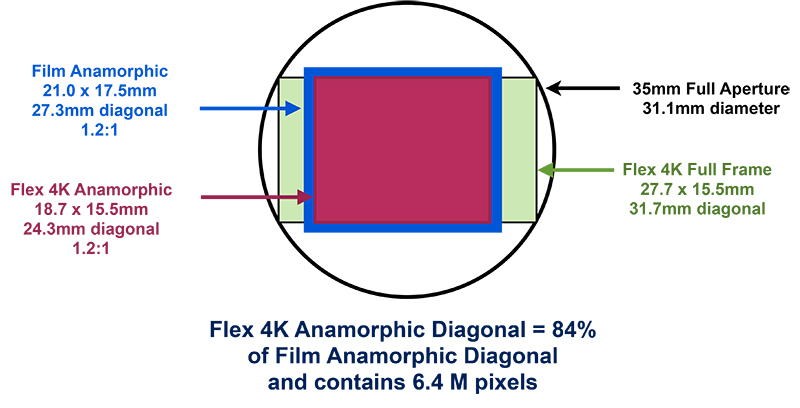
Workflow
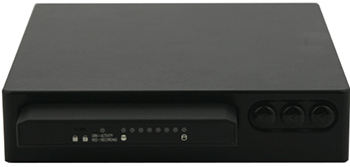 The new smaller, less expensive CineStation IV makes the downloading and conversion of RAW files faster and easier. (Pictured at right is a CineMag IV mounted in the CineStation IV.) Both PC and Mac download solutions are supported. Vision Research has also worked with Glue Tools to include, with every camera, one license of the Cine Toolkit and Séance software for the downloading of raw Cine files directly in Mac OSX.
The new smaller, less expensive CineStation IV makes the downloading and conversion of RAW files faster and easier. (Pictured at right is a CineMag IV mounted in the CineStation IV.) Both PC and Mac download solutions are supported. Vision Research has also worked with Glue Tools to include, with every camera, one license of the Cine Toolkit and Séance software for the downloading of raw Cine files directly in Mac OSX.















